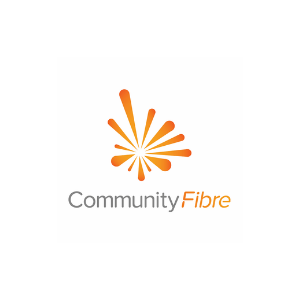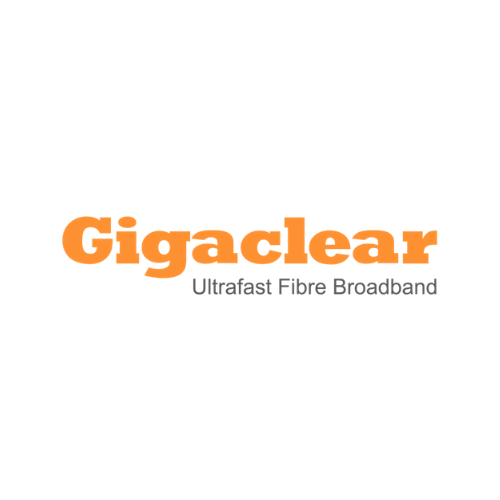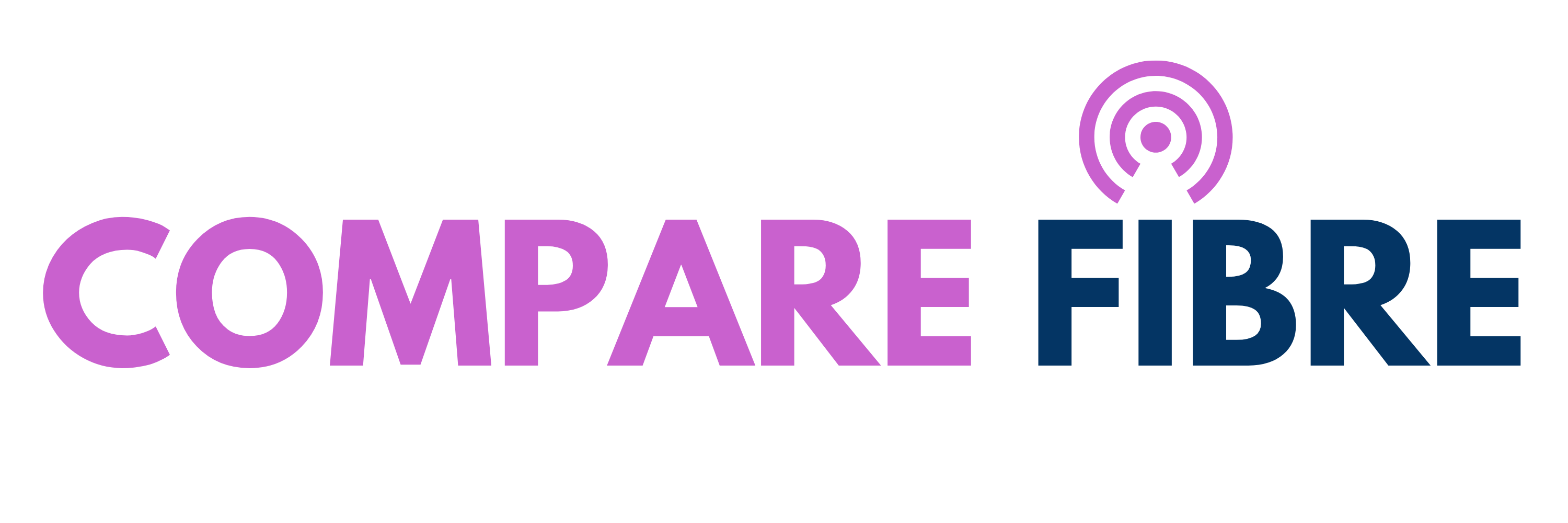Fibre Broadband Deals
Search & Discover The Best Fibre Broadband Deals Available To You
Get Alerted When Faster Speeds Go Live In Your Area

Mbps *Avg. Speed
Month Contract
Downloads
Calls
Install
Per Month

Mbps *Avg. Speed
Month Contract
Downloads
Calls
Install
Per Month

Mbps *Avg. Speed
Month Contract
Downloads
Calls
Install
Per Month

Mbps *Avg. Speed
Month Contract
Downloads
Calls
Install
Per Month

Mbps *Avg. Speed
Month Contract
Downloads
Calls
Install
Per Month

Mbps *Avg. Speed
Month Contract
Downloads
Calls
Install
Per Month

Mbps *Avg. Speed
Month Contract
Downloads
Calls
Install
Per Month

Mbps *Avg. Speed
Month Contract
Downloads
Calls
Install
Per Month

Mbps *Avg. Speed
Month Contract
Downloads
Calls
Install
Per Month

Mbps *Avg. Speed
Month Contract
Downloads
Calls
Install
Per Month
Fibre Broadband Deals
The majority of home broadband connections are either cable, ADSL or fibre-optic broadband, with ADSL and fibre available to the majority of UK premises.
• ADSL broadband: this is the slowest broadband network that is still overly-available, channelled through the UK’s copper phone line network covering 99% of the nation.
• Superfast fibre broadband: provided by a fibre-to-the-cabinet affiliation and obtainable by over 90% of the UK.
• Cable broadband: conjointly widely-available, however, solely around 55% since it’s presently offered by Virgin Media only.
• Full fibre broadband: restricted to particular locations with the new full-fibre infrastructure, presently at 20%.
If you are unsure what broadband is on the market in your vicinity, you ought to use a broadband availability checker to confirm whether you can get fibre in your area.
2020 is the year that we all stayed at home. With an influx of people working from home and many of our children taking online classes rather than traditional lessons, our broadband has felt the strain. Not to mention that a special night now means spending time watching Netflix. Have you been noticing slowdowns or hitting download or upload limits? Or have you found yourself annoyed at the low definition of your favourite movie or noticed that it seems to keep stopping in the middle of the action in order to buffer?
Now is the perfect time to look into investing in an upgrade and getting the best fibre broadband deal. If you are still using standard broadband, you deserve to take your Internet usage to the next level. With fibre broadband, you can uncover a new world of smoother, faster, and more reliable Internet usage.
But what is fibre broadband and how is it better than your standard broadband connection? Will it cost you an arm and a leg? And is it even available for your home? How will you know you’re choosing the best provider for you? Read on to find out all this and more.
What is fibre broadband?
Fibre broadband is a great way to get a fast and reliable Internet connection within your home. Named for the kind of cables utilised for the delivery of super speedy broadband into your house, this is an essential upgrade if you love your online life. Using fibre-optic cables which are created using incredibly thin strands of either glass or plastic, data is transferred from the provider of your Internet straight to the router you have in your home. And you’re online in no time!
Fibre optic broadband is a type of high-speed internet which presents a faster and steady internet connection. It employs optical-fibre cable, which is hugely advanced when transmitting data over long distances, compared to standard copper wires. And by data, we are talking about social media, online gaming, web browsing, and streaming music. You can practically do all the things you wish on the internet faster and without battling bandwidth between devices. It is one of the three commonly available types of broadband technology accessible in the UK, the other two being cable and ADSL (asymmetric digital subscriber line).
These cables are as thin as a single strand of your hair, and yet pack a real punch when it comes to giving you the fastest Internet connection around. There are a variety of different types of fibre broadband (explained in more detail further on). FTTH (fibre to the cabinet) is the most common one, using fibre-optic cables to connect your house via an exchange to a cabinet in your street. This is all completed by a copper phone line, which means you may not be able to achieve the mega-fast speeds you want.
FTTH or FTTP (fibre to the home/premises) is another type of connection, where a fibre-optic cable will run from the exchange to the street cabinet and into your home. It is only available in certain locations.
HFC (hybrid fibre-coaxial) is less common and used by Virgin Media. This uses a coaxial cable to connect between your house and the exchange. It is made mainly of copper and can transfer data much faster than even traditional fibre-optic broadband.
Overall, fibre broadband is the way that most people are now connecting to the Internet and provides a much more reliable experience, whether you are just browsing or working from home.
How does fibre optic broadband work?
Fibre optic broadband utilises glass or plastic cables rather than the standard copper wires employed in regular broadband internet connections. Data is channelled via beams of light, meaning it transmits at light speed and will not slow down over long distances. There are two significant versions of fibre broadband connections:
• FTTC, or fibre-to-the-cabinet: this is the more popular of the two, and as the name suggests it connects fibre cables to the local phone cabinet in the street – and from there standard copper wires are utilised to connect it to your house. This type of connection proffers a maximum of 100Mbps speeds.
• FTTP, or fibre-to-the-premises, also called FTTH or fibre-to-the-home, means the fibre optic cable goes straight to your home. As a result of eliminating the copper, it offers a maximum of 1000Mbps speeds; hence it’s therefore also more expensive.
What is the difference between broadband and fibre broadband?
The chief difference between ADSL broadband and fibre-optic broadband is the speed it is capable of delivering, with fibre-optic cables qualified to provide a much faster internet link than the antiquated, copper-based ADSL broadband phone lines.
Traditional broadband uses copper wire to connect to your home, rather than the faster fibre-optic cables. Also known as ADSL broadband, it relies on the wires that already exist in the network of your landline phone. This is a widely available option (up to 99% of addresses in the UK can access standard broadband).
However, standard broadband cannot access the higher speed levels of fibre-optic broadband. This is due in part to the use of copper wiring throughout, and also due to the fact it depends on the amount of “traffic” using the Internet at any given time. If you want to go online at peak times, you may find that your connection is slower or less reliable than at times when fewer people are online. These times can change and fluctuate, depending on your area.
The majority of ADSL broadband services will give average download speeds of about 10Mbps. Due to the infrastructure, there may be numerous variables that may impact the throughput rate you see. Your physical distance from the broadband exchange point and just how far you are from your street cabinet. Consequently, users can experience anything from about 20Mbps to less than 5Mbps.
Another downside of standard broadband is that the further you live from your phone exchange, the lower levels of service you will achieve. This makes it too slow and unreliable for those living in rural or more isolated areas.
These issues have largely been resolved by the increased use of fibre broadband. There should be less slowing down – your connection isn’t hindered at peak times and does not rely on the copper wire system.
Many fibre-optic broadband services begin at about 39Mbps — some three times faster. It’s important to point out that fibre packages at their slowest speeds are usually the same price, occasionally even cheaper, relative to ADSL prices.
Another advantage is that fibre broadband isn’t limited to the speed you order on day one. Customers can upgrade fibre broadband to an almost infinite capacity. 1-2Gbps is already commonplace in the UK. That is about one to two hundred times quicker than copper-based broadband and will future-proof your premises for years to come.
Do I need a phone line in my house for fibre broadband?
Whether you still need a phone line depends on the type of fibre technology your broadband uses. FTTC is only partially fibre broadband. FTTC fibre broadband is delivered to your premises using copper cable for the connection from your house or business to the nearest access point. In this case, you will require an active phone line to use it.
Standard ADSL is not fibre broadband. It is provisioned via Openreach’s network of copper telephone wires giving a reach to 99% of UK premises. Since ADSL broadband is transmitted via a phone line, you’ll require a landline to access the internet connection, despite the fact you might not want or need one for calls.
If ADSL is the only type of broadband accessible from your premises, then there is no way around paying for line rental and service charges to obtain access to your broadband. However, if you have FTTP or cable options available, you can eliminate this requirement.
FTTP or fibre to the premises is a full-fibre broadband solution. FTTP eliminates the need to have a phone line because the fibre optic cable used to deliver the broadband is installed directly into your home or business.
Can my house get fibre broadband?
Whether your house can get fibre broadband depends largely on where in the UK you live, however, it is more and more likely that you will be able to access it. There are some reasons why you may not be able to, though. If you live in an especially rural or isolated area, you may find that fibre broadband is not available. Ofcom data states that 94% of homes and businesses in the UK are able to access fibre broadband, so the best thing to do is to use an online checker such as the one on Compare Fibre to check which fibre broadband providers are available in your area. All you have to do is enter your postcode to discover if fibre broadband has been deployed in your area.
This service is also available on the sites of fibre broadband providers so you can be sure you are signing up for the best deal that is fully available to you where you live.
How can I find out what fibre broadband is available in my area?
Working out with new fibre networks are where in the UK is presently quite complex as there is a huge amount of network construction underway by a multitude of providers.
From a commercial perspective, broadband providers are financing huge investments rolling out fibre broadband infrastructure to two-thirds of UK homes. By 2025 the government aim is to have 100% full-fibre coverage in the UK. Inevitably, the providers are initially building out urban areas (instead of rural areas) where they believe that they will achieve a prime return on their investments in the first instance.
If you’re interested in finding out which providers operate in your vicinity, make use of the postcode checker to deduce the current fibre broadband accessibility for the exchanges near you and compare the best deals available.
Don’t fret if fibre broadband is not presently planned for your exchange; public funding is being utilised to significantly increase the reach of fibre broadband services within the next few years.
How does fibre optic broadband connect to my house?
Fibre broadband might seem like magic, but it doesn’t have to be such a mystery! There are, as it turns out, many different ways for fibre-optic broadband to get into your home. It depends on which type of connection you have, with the speed of your fibre broadband varying between 36Mb up to 900Mb, depending on your package and which area you live in.
In the past, everyone’s Internet connection was reliant upon either copper telephone lines or alternatively mobile networks. This has changed drastically over the past few years, and the copper wire (which could be less than reliable), has been replaced with fibre optic cables. As thin as a strand of hair, these small but mighty cables allow for the transmission of more information, so you get more for your money.
Here are some of the ways that fibre broadband can connect to your home:
FTTH (fibre to the home) — In this case, fibre optic cables run all the way into your home. This allows for incredible connectivity and speed. You can enjoy a speed of up to 900Mb. However, as you might expect, this is now such a widely available choice and may not be readily available to you where you live, especially if you happen to be somewhere rural or with fewer connections in general.
FTTB (fibre to the building/basement) — This is a great choice that may be used if you live somewhere with shared occupancy, sure as a flat. The fibre optic cables run all the way to your building, but do not come into your living space. Instead, they terminate in the basement or somewhere else in the building, giving you a strong connection and excellent speeds.
FTTC (fibre to the cabinet) — This is the most used and familiar connection in the UK, with fibre optic cables running from the cabinet in your street (you will have noticed it outside and probably wondered what it’s for!). The cabinet can be up to 300m away from your property and is connected to your home by copper wires. This can slow down your speeds, as it is again involving the older style copper wires. However, this is the connection you are most likely to encounter wherever you live.
FTTN (fibre to the node) — This is most likely to be used if you live in a rural or isolated area. It works similarly to FTTC, however, you will be further than 300m away from the cabinet – you may, in fact, be several miles away from it. The distance between your home and the cabinet is made up by copper wiring, which again will hinder the speed and connectivity. The first part of the connection is still made using fibre, but copper is used to make up the distance and with that comes all the downsides of a copper connection.
How much does it cost to get Fibre to your house?
Getting fibre to your house need not be an expensive proposition. However, there may be some setup costs. This tends to vary from provider to provider – some are even free. With some providers, there will be a small set up cost. Some providers will waive your set up cost if you are moving from a competitor, or upgrading from standard broadband to fibre broadband, with many deals available for new customers to entice you and save you some money in the process.
Do I need a phone line for fibre broadband?
Most of us use our mobile phones for all our “getting in touch” needs now, so having a landline telephone feels a little old fashioned. But you need one to get online, right?
Well, no!
We all remember when getting online involved a screeching sound if someone picked up the phone. It may seem like a novel idea, but unlike standard ADSL broadband, fibre broadband does not run through the phone wire network connected to your house. This is a good thing for a number of reasons – there are less slowdowns and the line doesn’t become overloaded. Best of all, if you don’t want or need a phone line, you don’t need to have one installed in order to enjoy fast and reliable fibre broadband. Your connection is much faster than the old phone line version, and you don’t have a device in your house that you never use.
Which providers offer fibre broadband?
The majority of broadband providers in the UK provide fibre broadband, with many of these utilising Openreach’s network. Nonetheless, other full-fibre providers employ their own infrastructure to deliver gigabit services. Providers such as Toob, Cityfibre, Gigaclear, Zzoomm are all building out full-fibre networks. Consequently, it pays to compare fibre broadband deals and providers, to guarantee you’re purchasing the best broadband package available.
BT broadband is the UK’s most popular fibre broadband services supplier, though TalkTalk fibre and Sky fibre also have sizeable market shares. Virgin Media, another giant provider in the UK, manages its private fibre-based cable network, with quicker speeds available at about 50% of UK homes.
Here are a few of the fibre broadband suppliers you can compare today:
• TalkTalk
• BT
• Virgin Media
• Sky
• Plusnet
• John Lewis
• Vodafone
• Post Office
• Relish
• EE
• Hyperoptic
• SSE
• First Utility
• Origin
• NOW Broadband
• POP Telecom
• Onestream
• Shell Energy
You can also search for other types of deal such as, fibre broadband with free setup, superfast broadband deals, gigabit broadband deals, best broadband deals, and fibre broadband packages .
What is the cheapest fibre broadband available, and is it any good?
Fibre-optic broadband in the United Kingdom is very cost-effective, with the cheapest deals usually just a few pounds extra per month compared to the slow standard broadband. Broadband price comparison sites are useful for understanding all of the available technologies accessible at your location and making it simple to find the deal that best fits your needs.
Fibre broadband deals will appear to be the obvious choice for many people when purchasing a new internet plan. We’re streaming round the clock, gaming, browsing more and more smart devices, and working from home is becoming more prevalent.
And fortunately, fibre has gradually become very budget-friendly, with prices plummeting right down to perch just above what you’d spend on ADSL. The likes of BT Fibre, Virgin Media, Vodafone, Sky Fibre, and more offer faster and faster packages.
If you are a consumer who thought that the most competitive broadband deals are put aside for slower ADSL connections, think again. Fibre broadband is a vicious battleground for the giant providers, which means fibre broadband remains eminently affordable. Over the last months, we’ve encountered prices less than £25 per month for 35Mb internet connection with the likes of Plusnet, TalkTalk, Vodafone bearing arms to battle it out for the best fibre-optic broadband deals.
Who is the best fibre broadband provider?
While everyone has their own preference as to which fibre broadband provider they believe is the best, it really depends on your needs, budget, and where you live. However, the provider with the most users is BT (which includes PlusNet and EE), which has 9,300,000 subscribers. EE especially has a great customer service rating and doesn’t seem to suffer from the complaints and issues associated with BT. With five fibre broadband options to choose from (three which are widely available and two higher speed options which may only be available in certain areas), there is a choice for everyone with EE. There are no download limits or unexpected usage caps and there are some nice little extras for those who are already using EE mobile.
EE, and therefore BT, aren’t the only names in town, however. Other top rated fibre providers include Zzoomm, Hyperoptic and Zen. These lesser-known brands are popular for their great speeds and excellent customer service – a big bonus if you ever run into problems with your fibre broadband connection and need to get back online ASAP.
From time to time fibre broadband deals are promoted by Zzoom, Hyperoptic and Zen, so it is worth checking regularly to find a great contract on offer.
Who is the cheapest broadband provider in UK?
The cheapest provider of fibre broadband in the UK currently is Origin Superfast Fibre Broadband. For £20.99 per month, a contract with Origin will provide you with 36Mb speeds, unlimited downloads, but no calls. This is based on an 18-month contract. so if you’re looking for the best fibre broadband deal based on price alone Origin may be the one for you.
Which fibre broadband providers have the best reviews?
Finding the best broadband supplier can be a challenge. There is a wide range accessible, with a massive selection of great value deals. Broadband providers all have their strengths and weaknesses. Sometimes the easiest way to get a feel for a broadband supplier is to research reviews. Customer reviews provide an excellent insight into what people think of the service they are already getting.
The Post Office and Now TV are well-known budget operators. Hyperoptic and Virgin Media are super speedy. BT takes the lead for coverage.
Is it worth getting fibre broadband?
For those who want a reliable and highly useable Internet connection, fibre broadband is essential. In 2020, more of us have been working from home than ever before, which has put a strain on our Internet connections. If you live in a household with others, then you know the pain of trying to upload or download something or simply getting online, when everyone is on their devices. With fibre broadband, these limits are taken away and you can enjoy a faster, easier connection without fear of it dropping out during peak times. Though there are some initial set up costs in some cases when switching to fibre, the peace of mind of enjoying a reliable Internet connection is invaluable.
If you can get fibre broadband in your area, it is well worth upgrading from your old standard broadband connection. You can look forward to hassle-free browsing, whether for work or pleasure, with a connection that is as fast as the speed of light.
